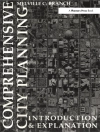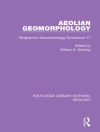Document from the year 2019 in the subject Energy Sciences, I. K. Gujral Punjab Technical University, course: Electrical Engineering, language: English, abstract: India’s plan to ramp up solar power generation to 100 GW by 2022 is among the largest in the world. It aims to bring sustainable, clean, climate-friendly electricity to millions of India’s people. The World Bank Group is moving to help India deliver on its unprecedented plans to scale up solar energy from installing solar panels on rooftops to setting up massive solar parks. This will catapult India to the forefront of the global effort to bring electricity to all, mitigate the effects of climate change, and set the country on a path to become the India of the future.
Solar power in India is a fast-developing industry, with a cumulative installed grid connected solar power capacity of 26, 025.97 MW (26 GW) as of 31st December 2019. The Indian government has significantly expanded its solar plans, targeting 100 billion US dollar of investment and 100 GW of solar capacity (including 40 GW from rooftop solar) by 2022.
This book presents the status of renewable energy and solar PV technology at the beginning. A solar Photovoltaic (PV) cell converts solar radiation into electric energy with the help of a diode, two resistances and connected load. In order to harness the maximum power, Maximum Power Point Tracking (MPPT) technique is used which is able to generate the power at Maximum Power point (MPP). The importance of two custom power devices namely, Distributed Static Compensator (D-STATCOM) and Unified Power Quality Conditioner (UPQC) is highlighted with its impact on Power Quality (PQ) especially considering various PQ issues. In this book, the impact of three-phase fault at unity power on the performance of solar PV grid tied system is highlighted. The PQ system performance has been evaluated under the influence of three-phase fault and waveforms are studied.
The effect of fault has been discussed at Point of Common Coupling (PCC) and Total Harmonic Distortion (THD) analysis has been done using the Fast Fourier Transform (FFT) tool of Matlab software. Finally, the THD at the various points of PCC are calculated and discussed at fundamental frequency. Finally, the role of D-STATCOM and UPQC in improving the PQ aspects for a solar PV grid tied system at unity power factor. Sag has been reduced in the current waveforms obtained at PCC whereas the THD levels have been reduced for utility grid side (i.e. the point where the fault has been introduced).
Akhil Gupta
Matlab Simulations Using D-STATCOM and UPQC in Solar Photovoltaics. A Power Quality Analysis [PDF ebook]
Matlab Simulations Using D-STATCOM and UPQC in Solar Photovoltaics. A Power Quality Analysis [PDF ebook]
购买此电子书可免费获赠一本!
语言 英语 ● 格式 PDF ● 网页 66 ● ISBN 9783668878198 ● 文件大小 1.3 MB ● 出版者 GRIN Verlag ● 市 München ● 国家 DE ● 发布时间 2019 ● 版 1 ● 下载 24 个月 ● 货币 EUR ● ID 6882854 ● 复制保护 无












